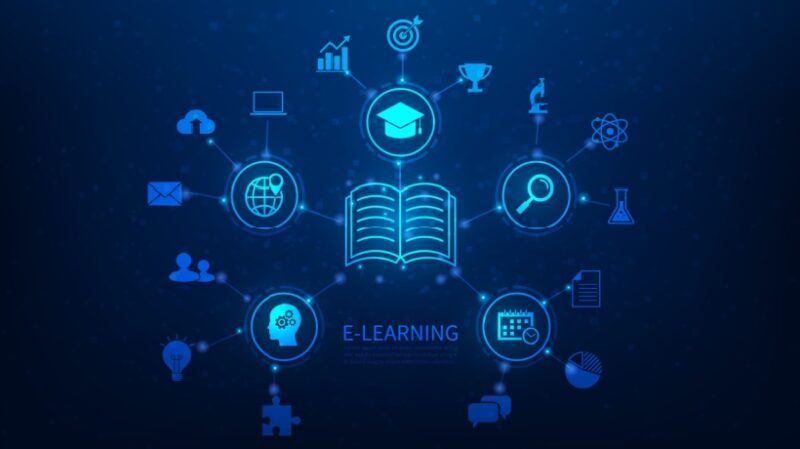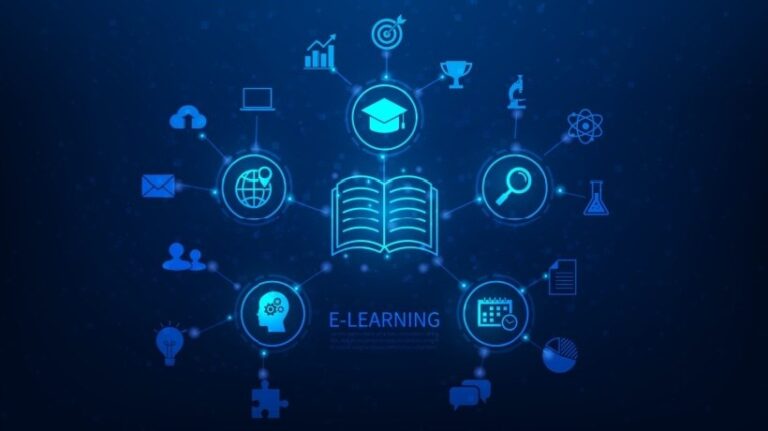
Customized learning to increase engagement
In today’s rapidly evolving learning environment, organizations must provide training that is relevant, engaging, and goal-aligned. Off-the-shelf courses offer convenience and speed, but often fail to meet your specific learning needs. Custom eLearning solutions, on the other hand, allow organizations to tailor content, design, and delivery methods to their unique culture, skill gaps, and performance goals. This article examines how custom eLearning can perform better than pre-built alternatives, focusing on the eLearning design process, microlearning modules, and the role of eLearning content providers.
1. Alignment with organizational needs
Ready-made courses are designed for general audiences. It covers a wide range of topics, including communication skills and workplace safety, in a one-size-fits-all manner. In contrast, custom e-learning solutions are created after analyzing an organization’s specific learning objectives, audience, and industry requirements.
For example, compliance training for a pharmaceutical company is very different from customer data security training for a bank. Custom courses ensure that every element, from examples and case studies to terminology, matches the learner’s real-world environment. This contextual relevance improves comprehension and long-term memory retention.
2. Flexibility in design and delivery
The main strength of custom e-learning solutions is their flexibility. Organizations can decide on the structure of content, the media formats to use, and the instructional strategies to apply. The eLearning design process can include:
interactive video. Scenario-based simulation. Evaluation through gamification. Microlearning elements.
This adaptability keeps learning engaging and supports different learning styles such as visual, auditory, and kinesthetic. On the other hand, with off-the-shelf courses, customization is typically limited to surface-level changes such as adding a company logo or color scheme.
3. Improved integration with learning platforms
Custom eLearning performs better than off-the-shelf courses when it comes to effectively integrating with learning management systems (LMS) and other digital training environments. It can be designed to include progress tracking, adaptive learning paths, and real-time reporting. This helps training administrators monitor completion rates and evaluate learner performance efficiently. On the other hand, off-the-shelf content doesn’t necessarily match your organization’s LMS or reporting needs. Compatibility issues can limit how you can acquire and analyze training data.
4. Incorporate microlearning to increase retention
Custom courses can be configured as microlearning modules, where the content is divided into short, 5- to 10-minute intensive lessons. These bite-sized units are perfect for modern learners who prefer learning information in a quick and easy-to-understand format. Microlearning supports just-in-time training. Employees can access specific lessons whenever they need to update their skills or follow a process. This level of flexibility is difficult to achieve with off-the-shelf courses, which are typically built as long, linear modules.
5. Increase engagement with interactive design
The eLearning design process used in custom solutions allows for the integration of interactivity. Learners can engage in branching scenarios, decision-making exercises, and real-world simulations. These techniques create an active learning experience that improves the application of knowledge. Ready-made courses may have limited interactivity, often limited to multiple-choice quizzes and basic drag-and-drop activities. In contrast, custom content can recreate authentic work situations that foster deeper learning.
6. Continuous improvements and updates
Custom eLearning modules can be easily revised if policies, technology, or processes change. Because your organization owns the source files, you can make updates quickly without relying on external publishers. Off-the-shelf courses can become outdated over time, especially in industries like healthcare and finance where regulations change frequently. Custom courses keep your content current and compliant, supporting consistent employee preparation.
7. Long-term scalability and cost efficiency
Developing the initial eLearning content for a custom course may take longer and cost more than purchasing a ready-made course, but the long-term benefits outweigh the costs. Custom modules can be reused, updated, and expanded as your training needs evolve. Organizations that invest in robust custom libraries often become more economical over time because their content remains relevant and adaptable and eliminates the recurring licensing fees associated with off-the-shelf content.
8. Collaboration with e-learning content providers
By partnering with an experienced eLearning content provider, you can be sure that your custom course will be designed using proven instructional design methodologies. These providers follow a structured process that includes needs analysis, storyboarding, prototype development, and testing. Through collaboration, organizations can ensure that their training programs reflect the right balance of accuracy, engagement, and accessibility.
conclusion
Custom eLearning solutions have clear advantages over off-the-shelf courses in terms of relevance, adaptability, and learner engagement. A well-planned eLearning design process allows organizations to create meaningful learning experiences that integrate microlearning modules, real-world applications, and flexible delivery methods. Over time, this approach not only improves performance, but also establishes a sustainable learning culture built on continuous improvement.
red chip solution
Red Chip Solutions provides affordable, technology-driven learning solutions that energize workforce development and streamline virtual training for organizations around the world.


